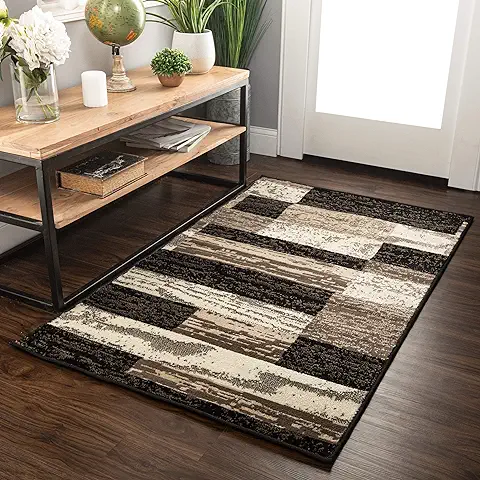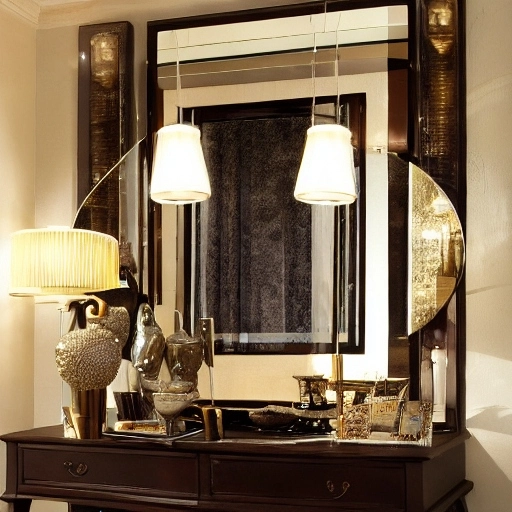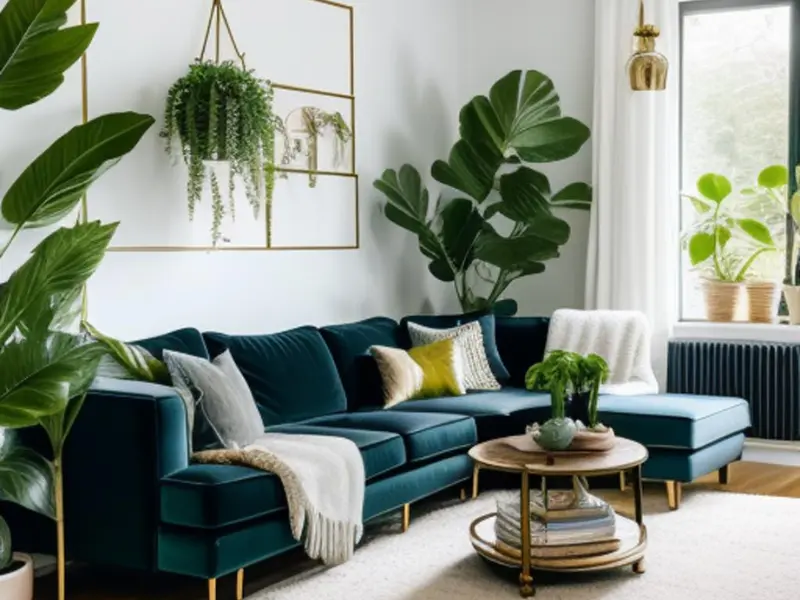How To Decor A Long Living Room| Long Narrow Living Room Ideas
Updated: 11 July 2024
192
You have come to the right place if you are looking for the ultimate guide to making your long living room a cozy and stylish retreat! Imagine decorating a room with the walls stretching outward. If you’re faced with decorating a large living room or a long, narrow living space, don’t be afraid – we’re here to help design the living room. The purpose of this guide is to provide you with simple and effective tips that will help you make your home not only look great but also feel comfortable and functional. So, let’s embark on this journey together and learn how to decorate a long living room.
How to Arrange Furniture in a Long, Narrow Living Room

It is important to optimize both functionality and aesthetics when arranging furniture for a large living room. To create a visually appealing layout, follow these practical tips for a long living room setup:
Space-Defining
If you are decorating a long living room, the first step is to define different areas or zones. Because of the room’s length, this is important for functionality and to make it seem less overwhelming. Zones can be defined in a variety of ways, such as:
- Dividing a living room into different two seating areas. It is easier to accomplish this by grouping furniture rather than lining it up along the walls. Underneath area rugs, define spaces.
- Separate seating areas or TV viewing areas can be marked with area rugs placed side-by-side. Rugs should be in different colors or patterns.
- Establish a well-defined walkway down the center by placing furniture pieces against opposite walls.
- Break up the space visually with built-in bookshelves, cabinets, or window seats.
- To create a defined conversation area, arrange the furniture in an L-shape rather than a straight line.
- To establish a focal point in the middle of the room, arrange the seating around a central coffee table.
Creating visual divisions
A visual divide is another way to break up a long room. Here are some great options:
- Wooden, glass, or fabric partitions, screens, or room dividers can be installed.
- Displaying family photos or art pieces on gallery walls, floating shelves, or tall houseplants.
- To vary the ceiling height, include architectural features such as arched doorways, beams, or coffered ceilings.
- Use freestanding room dividers on wheels that can be moved around as needed.
- Adding layers to sheer window treatments by layering them on both sides.
Furniture Arranging
The placement and arrangement of furniture is crucial for navigating a long living room comfortably. Here are some tips to consider:
- Instead of arranging furniture in a straight row, place it in a U-shape, L-shape, or parallel configuration against the side walls. Separate spaces are defined in this way.
- The main seating area, such as a sofa, should be positioned midway along one wall rather than all the way at the end. Make sure there is space for walking.
- You can add auxiliary seating by placing accent chairs, ottomans, or side tables near seating areas.
- To avoid crowding, place the TV on an end wall rather than in the middle.
- To facilitate easy traffic flow, leave a clear path down the center that is at least three to four feet wide.
- A console table, bookshelf, or plant at one end of the entryway will define the space for the entryway.
- Furnish the room sparsely rather than cramming in too many pieces that clutter the flow.
Sectionals vs. Individual Pieces
You will need comfortable and practical seating when furnishing a long living room. Think about whether a sectional sofa would work better than individual pieces. Here are some tips:
- With a sectional sofa, you can define separate sitting areas within one long sofa arrangement. Corners can be tight 90 degrees or loose.
- Although armchairs and loveseats can be placed more freely, they may not furnish a large space.
- Add an ottoman to a loveseat or armchair for extra seating capacity.
- When guests stay overnight, modular or sleeper sectionals offer extra sleeping space.
- With reclining loveseats, you can watch TV and relax while lounging.
- Sofas with console tables or storage ottomans maximize space.
The Importance of Area Rugs

Long rooms benefit from area rugs because they define zones, anchor furniture groups, and add warmth, color, and pattern. Consider the following:
- A unified look can be achieved by layering two 5×8 or 6×9 runner rugs end-to-end.
- Under the main seating area, place a large 8×10 or 9×12 rug, and under the end tables, place smaller rounds.
- High-traffic areas require durable materials such as sisal, jute, or seagrass.
- Coordinating colors and patterns with furniture and decor to create a visually appealing environment.
- In place of rug-on-rug groupings, leave rug perimeters exposed for a framed, intentional look.
Accent Lighting and Mirrors

In long, narrow rooms, layers of lighting and mirrors can make a dramatic impact. Here are some top lighting ideas:
- On consoles or side tables, place task lamps flanking the sofa.
- Pendant lights above dining tables or coffee tables can be freestanding or hanging.
- Lighting can be added to built-ins along the walls by installing lighting strips under the units.
- Wall accent mirrors or sconces flanking artwork.
- Flexible torchiere floor lamps that direct light where it is needed.
- In order to make the space feel larger, mirrors on end walls, including full-length options, are used.
- Incorporating recessed ceiling lighting for general illumination.
Wall Art and Decor

Artwork and decorative accents become especially important when wall space is abundant. Here are some ideas on how to decorate the big living room wall.
- A gallery or media wall is created by grouping framed artwork in varying sizes.
- Display favorite collections by layering lightweight shelf brackets.
- A large wall mural, wallpaper, or decal arranged in a repeating pattern over a long distance.
- Add framed mirrors, wall sculptures, or wall hangings to offset empty spaces.
- For storage, plants, and displays, built-in shelving, cabinets, or window seats.
- Installing macrame wall hangings, dream catchers, or hanging planters.
Accessories and plants

Greenery, soft goods, and other decorative accessories help define seating areas within long, linear spaces. Take into account:
- Console tables and mantels can be decorated with tabletop plants like succulents and folded-leaf philodendrons.
- Consider snake plants, bamboo palms, or fiddle-leaf fig trees as tall standing foliage.
- Decorate coffee and end tables with woven baskets, trays, and decorative objects.
- Cover sofas and chairs with throws, pillows, and blankets.
- Display books, framed photos, vases, and knickknacks on built-ins and shelves.
- Add decorative accents that reflect your favorite hobbies, collections, or styles.
Ideas for color schemes
Cohesive long-room styling relies heavily on monochromatic or analogous color palettes. Here are some top ideas:
- White or off-white furniture with bright accent colors like blush, sage, navy, or pale gray.
- Neutral earthy tones like putty, camel, and oatmeal with accessories in green, blue, and rose.
- Pair warm wood furniture stained dark with neutral creams and taupes.
- Brass, wood, and geometric patterns accent this mid-century modern design in teal, orange, and white.
- Textures of plaid, wood, and muted linens are used to create a modern farmhouse look.
- A coastal décor with blues, whites, and naturals combined with seagrass, jute, and shells.
- Metal, glass, and marble accents combine with sleek black, gray, and cream interiors.
How to decorate long living spaces on a budget
It can be challenging to furnish a long, narrow, or odd-shaped living area. You can design a comfortable living room even in awkward configurations with smart planning and adaptive furniture. Consider these affordable tips for living if you’re on a budget.
- Room dividers made from curtains, rattan, or wood.
- Art from thrift stores, picture ledges, and gallery walls.
- The reupholstering of second-hand or discount upholstered pieces in new fabrics.
- Furniture made from recycled materials, such as wicker and aluminum, can be used indoors.
- Accessories, vases, candles, books, and knickknacks from Dollar Stores.
- Online liquidators or past-season sales for rugs.
- Candle flames that are powered by batteries or plug-ins rather than real ones.
- Instead of expensive soft furnishings, use sheer overlapping curtains.
It is possible to make the most of even a long, narrow living space with careful planning and creative furnishing ideas. Designing an inviting and stylish living room involves defining zones, layering textures, styling artwork, and incorporating ambient lighting. Using these tips and options will help you decorate your long room in a refreshing, functional, and comfortable way.
Small Narrow Living Room Ideas
Make the most of every micro-space. Sofas with slim profiles are better than those with bulky cushions. You can find space-saving furnishings at deep discount stores, such as small shelving units and ottoman coffee tables with storage inside. You can save valuable floor space by using multifunctional pieces such as daybeds that are built into credenzas or Murphy beds. Visually expand tight quarters with area rugs in light, neutral tones.
Layouts Of Long Apartments |
|---|
|
The spaces in a long, narrow galley-style apartment should be zoned down the length. The main sitting area should be defined by a sofa, side table, and area rug in the middle of the room. Additional storage can be added by adding open shelving or a freestanding cabinet near the entry. To preserve circulation, choose a slim console or credenza behind the sofa instead of a bulky entertainment center. |
Living Room Furniture For Long, Narrow Spaces
- A narrow living room can feel crowded if there is too much furniture.
- Select pieces that can be used in a variety of ways instead.
- Sleeper sofas allow for different seating arrangements based on their flexibility.
- Adding outlets to slim tables makes charging devices easier.
- Ottomans with tufting can be used for storage.
- When you want to relax during the day, you can slide the bed into the wall with hardware
Living Room Layout Ideas for Long Rooms |
|---|
|
For a big open living room layout, create multiple seating areas with area rugs and tie together the various areas with tall plants, oversized artwork, and layered lighting. Rather than lining one wall in long, rectangular family rooms, define spaces around a central path. To create distinct conversation areas, place an L-shaped sectional anchored on two sides and facing a group of chairs. An angled console or plant stand can divide two loveseats in opposite corners. Build-ins, artwork, or bookshelves can be arranged lengthwise down walls. |
How To Redesign My Living Room
Here are some tips for redesigning a large sitting room:
Creating a focal point is as simple as painting an accent wall, adding colorful wallpaper, or using textures like wood. Lighting fixtures should be updated and more layers should be added, such as table lamps and floor lamps, in order to make the space cozier. Rethink your furniture layout to improve flow or define areas for media, conversation, etc. Decorate with throw pillows, blankets, greenery, and new art pieces and shelves. Furniture that can be moved around, such as ottomans with storage and tray tables, can be multipurpose. Your living room can be freshened up with a fresh coat of paint, refinished wood floors, new window treatments, and upgraded fixtures.
Layout for A long Skinny Living Room
- Plan open-concept ranch floor plans along the long dimension.
- Instead of closed walls, use design elements such as screens, shelving, or architectural transitions to separate functions.
- Create a modular sectional seating area, followed by a dining area anchored by a slim, long table aligned along the rear wall.
- A designer budget isn’t required to decorate an oddly shaped, long, or narrow room.
- In a challenging configuration, you can zone different living areas with strategic planning and furniture selections that maximize space.
10 Tips on How to Decorate A Long Living Room
Many people ask how to decorate a large living room. Having a long living room can be both a blessing and a curse. However, if it is not properly styled, it can also feel empty and uninviting. The right design decisions can transform your long living room into a cozy and welcoming space. The following tips will help you decorate a big living room:
Big Living Room Ideas:
1. Establish defined zones. Using rugs, furniture groupings, and plants, divide the room into separate zones for sitting, TV viewing, dining, etc. It prevents the room from feeling like an empty hallway.
2. Create a focal point. Adding a colorful painting, wallpaper accent wall, or built-in bookcase at one end anchors the room. Hang it at eye level.
3. Add textures. You can layer carpets, fabrics, hard surfaces, and natural materials such as wood. It keeps the space from feeling cold and monotonous because of the varied textures.
4. Look into modular sectionals. The sectional sofa or modular furniture allows you to occupy more wall space and keep conversations moving between rooms.
5. Make use of mirrors strategically. Having one at each end creates the illusion of symmetry and reflects natural light.
6. Include plants in your design. Adding greenery not only softens hard surfaces but also fills empty corners. Consider succulents, ferns, and palms with different textures.
7. Place a coffee table in the living room. Long, narrow tables provide a surface for drinks and decor while keeping the room’s flow. A storage unit is a good option.
8. Provide architectural details. Make the room stand out with unique pendant lights, exposed beams, built-in shelving, or a wallpaper border below the ceiling.
9. Make the most of natural light. Maintain privacy while letting sunlight in with cafe curtains or blinds.
10. Describe the entryway. Instead of getting lost in the floor plan, add a console table, coat rack, or upholstered bench to welcome guests right away.
These simple strategies will allow your regular long living room to shine without feeling crowded or empty. Utilize every inch by maintaining balance, and flow, and defining vignettes.
Faqs:
Is Slim Coffe Tables Are Ideal Furniture For Narrow Living Rooms
Living rooms with limited width require slim, multifunctional furniture. Seating can be provided without overcrowding on skinny loveseats or futons. When open, nesting tables tuck compactly beside sofas. For tight spaces, slim coffee tables are ideal. Mount a pull-down or flip-down Murphy bed above the sofa for daytime storage.
How do I design my living room?
In the center of the room, arrange a large L-shaped couch and a coffee table facing the TV. The cozy seating area can be completed with an area rug under the couch, two armchairs on either side, shelving behind the couch, and end tables with lamps next to the armchairs.
How to design a lounge room?
A large coffee table should be surrounded by three comfortable couches. A plush area rug, pillows, a side table with a lamp, wall art, and shelves for books and decor accents will complete the look.
What Are The Ideas For Layouts of Long-Narrow Living Rooms
You can furnish an open rectangular floor plan on a budget creatively. Separate expansive areas into distinct zones. Cluster a loveseat and armchair around an ottoman in one corner, separated by an elongated trunk, sideboard, or low shelving unit displaying decorative accents. Place two sofas perpendicularly, divided by a pebble path.
How to Arrange Furniture in a Long Living Room
Instead of crowding items into one large grouping, arrange furniture with adequate spacing in long, expansive rooms. Make sure there is enough space between lounge areas in all directions so that navigation is easy. So guests don’t have their backs to the views, arrange furniture perpendicular to windows instead of parallel. Establish intimate seating sections without blocking other areas of the room.
Define the Layout of Long Narrow Living Room Furniture.
Maximize versatility in skinny ranch-style spaces. The outer walls can be used for art displays or bookshelves in place of a wedge or curved sectional. To avoid a straight line, place an accent chair kitty-corner across the room’s end. Center the focal point TV on the short wall rather than the long wall.
What Decorating Ideas for Narrow Living Rooms?
In thin living areas, decor stands out even more. Stagger floating shelves along walls at varying heights to create layered displays. Create a collection of books, photos, plants, and accessories. A gallery wall of framed artwork with staggered placement looks great. Hang industrial-chic pendant lights over furnishings for ambient lighting that won’t snag.
How to divide a large living room into two rooms?
To effectively separate the space into two distinct areas while maintaining light, flow, and an open atmosphere in the living room overall, use ceiling-to-wall partitions, screens, or room dividers.
How to separate living room and dining area?
To create separation while maintaining an open layout, anchor each room with a different patterned rug and use solid partitions and bookcases to create separation.
Please Write Your Comments